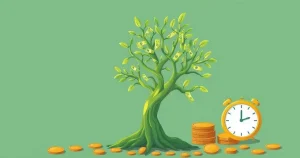ADVERTISEMENT
The Financial Market is a constantly evolving space, offering opportunities for those who know how to navigate it. Each investor is like an artist, crafting a unique masterpiece through strategic decisions. Every choice made shapes the path toward financial success.
Balancing risk and diversification is essential, much like an artist blending colors to achieve harmony. With the right approach, investors can build resilience and stability, navigating the complexities of the market with confidence.
ADVERTISEMENT
Curious to explore how your portfolio can become a work of art? Keep reading to discover insights that can guide your journey.
The painting of diversification
Just as a painter meticulously selects and blends a broad palette of colors to bring a balanced and engaging work to life, an investor, equally, is challenged to apply the art of diversification to his portfolio.
ADVERTISEMENT
Diversification, true financial mastery, consists of the ability to wisely disperse resources across distinct asset classes, providing robust protection against the ups and downs associated with a single investment.
On a diversified canvas, stocks, bonds, real estate and commodities become distinct brushstrokes, contributing to a solid composition that is resistant to market swings.
This strategic approach resembles the creation of a visual symphony, where the diversity of elements harmonize to form a resilient and enduring financial melody.
The contrast between risk and return
The mastery of investments demands a tireless search for the perfect balance between risk and return, resembling the richness of detail in the composition of light and shadow in a painting, giving depth and complexity to the work.
In the intricate financial landscape, the meticulous assessment of the risk inherent in each investment, in relation to the possible rewards, emerges as an imperative necessity.
In this context, sophisticated strategies such as asset allocation and in-depth risk profile analysis play crucial roles, allowing the investor to achieve a delicate and insightful balance.
Just as a skilled artist manipulates the nuances of light and shadow to create an engaging work, the skilled investor uses refined strategies to shape a portfolio that is both robust and subtle, navigating the complexities of the market with dexterity and wisdom.
The subtle use of fundamental and technical analysis
While some investors prefer fundamental analysis, examining the financial fundamentals of companies, others lean towards technical analysis, studying chart patterns and market indicators.
The true art of investing often lies in the ability to incorporate both approaches synergistically. As an artist who Masters different styles, a well-rounded investor understands when to apply fundamental analysis to choose solid assets and technical analysis to time their market entries and exits.
Patience as quality ink
Patience, like masterfully applied quality paint, is the vital element that brings a masterpiece to life in investments. In this vast financial world, the ability to wait for ideal opportunities and resist short-term fluctuations takes on crucial importance.
Haste often translates into impulsive decisions, threatening to jeopardize long-term returns. In a poetic parallel with the art of painting, we resemble a careful painter who patiently waits for the paint to dry before applying the next layer, understanding that time is a valuable ally in building a robust composition.
Likewise, the patient investor, like a skilled artist, waits for the propitious moment to adjust his portfolio, taking advantage of opportunities that mature with the precision of time, rather than succumbing to the pressure of momentary oscillations.
This ability to resist urgency, without giving in to impatience, is truly the essence of a wise and strategic approach to investing.
The sculpture of risk management
In the same way that a sculptor devotes meticulous attention to every detail of his creation, an insightful investor skillfully carves his path to Success Through refined risk management.
Establishing stop-loss orders, outlining loss limits and thoroughly understanding the dynamics of the risk-reward ratio emerge as fundamental skills in this process.
True artistry is rooted in the ability to sculpt risk exposure strategically, preserving invested capital while simultaneously aiming for substantial gains.
This mastery in risk management mirrors an investor’s dexterity, revealing harmony between the preservation and growth of wealth, akin to sculpting a financial masterpiece.
The constantly evolving work of art
Mastery of investment represents an uninterrupted journey of learning and adaptation. However, conforming to the maturation of an artist over time, an investor must remain flexible, readily adjusting strategies in the face of market swings and economic conditions.
Ultimately, achieving success in the financial arena is a complex interweaving of skill, patience, and boldness; forming a financial masterpiece capable of resolutely standing the test of time.
The importance of understanding market trends
In the Financial Market, just as an artist studies trends in art, an investor must stay attuned to economic indicators and shifts. Understanding market trends allows investors to anticipate changes, adjust their portfolios, and make informed decisions.
This awareness can lead to strategic investments that align with both short-term gains and long-term growth.
Monitoring Economic Indicators
Economic indicators such as interest rates, inflation, and employment figures are crucial tools in interpreting market conditions. By analyzing these indicators, investors can better predict market shifts, allowing them to allocate resources more effectively.
Recognizing Market Cycles
The Financial Market moves in cycles, and recognizing these patterns is key to making well-timed decisions. Knowing when to buy, hold, or sell can significantly impact an investor’s success, helping to avoid unnecessary risks during volatile periods.
The role of global events in the financial market
Global events, such as political changes, natural disasters, or shifts in international trade, have a profound effect on the Financial Market. Investors who stay informed and adaptable can navigate these fluctuations more effectively, leveraging global developments to their advantage.
Political Influence
Government policies and geopolitical events can lead to market instability or growth opportunities. Investors must pay attention to global politics, as trade agreements, regulations, and sanctions often reshape the economic landscape, influencing stock prices and market stability.
Technological Advancements
Technological innovations also have a transformative impact on the Financial Market. From cryptocurrency to AI-driven trading algorithms, staying ahead of technological trends is crucial for modern investors seeking to capitalize on new market opportunities.
Behavioral finance and emotional decision-making
The Financial Market is not driven by numbers alone; human psychology plays a significant role in investment decisions.
Behavioral finance studies the influence of emotions, biases, and irrational behavior on investment choices, helping investors to recognize and control emotional responses that may hinder long-term success.
The Impact of Fear and Greed
Two of the most powerful emotions in investing are fear and greed. Fear can lead to premature selling, while greed might encourage over-optimism and risk-taking.
Understanding these emotional drivers allows investors to maintain discipline and stick to their long-term strategies, even in the face of market turbulence.
Overcoming Biases
Common cognitive biases, such as confirmation bias and herd mentality, can lead investors to make poor choices. Recognizing these tendencies can help in developing a more rational approach to investing, ensuring decisions are based on data rather than emotion.
Crafting a long-term strategy
In the ever-changing Financial Market, the most successful investors are those who craft and stick to a long-term strategy. A well-thought-out approach provides a roadmap for navigating market volatility while steadily building wealth.
Setting Clear Goals
Investing without clear goals is like painting without a vision. Establishing financial objectives, whether for retirement, education, or wealth building, provides focus and helps investors make decisions that align with their aspirations.
Regular Portfolio Reviews
As markets evolve, so should an investor’s portfolio. Conducting regular reviews ensures that investments remain aligned with goals, risk tolerance, and market conditions. This process allows investors to rebalance their assets and maintain a diversified, resilient portfolio.





